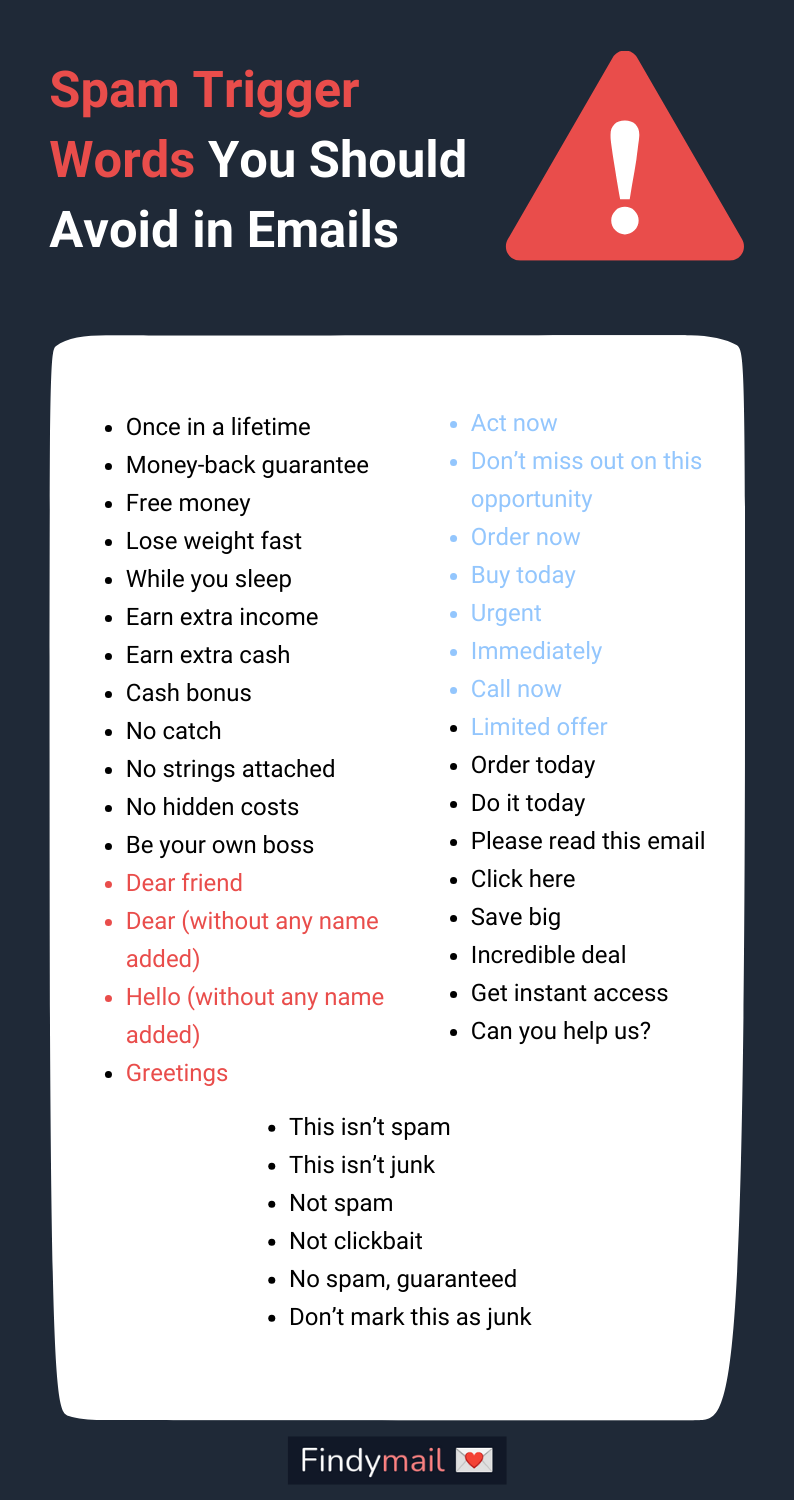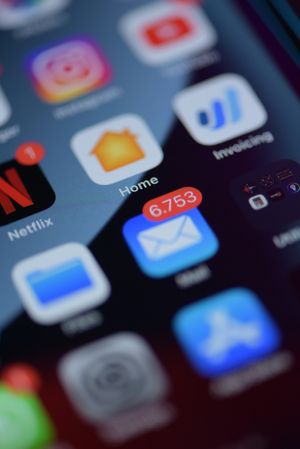It’s no secret that email is one of the most effective sales tools today. The thing is, for cold emails to be effective, your audience needs to receive and open your emails. Your emails should land in their Primary inbox - not the Spam folder.
In addition to warming up your emails and using spintax to randomize your emails, you can boost your email deliverability by avoiding spam trigger words.
And today, I’ll show you the main words to skip and keep the email service provider bots happy!
What Are Spam Trigger Words?

Spam filters help email users keep their inboxes clean by automatically routing spam to their spam inboxes. There are a variety of triggers these filters use to do this, and one of the simplest is checking emails for the use of spam trigger words.
These spam trigger words, in turn, are words or phrases that email providers have identified from previous spam and now flag as possibly being spam or malicious. When one of these words is identified by the provider's filter, an email is directly routed to a recipient's spam inbox.
Different Types of Spam Trigger Words
The problem is that whether a word qualifies as spam or not isn’t always as clear-cut. Also, whether a filter flags a word as spam also depends on other factors like the sender’s bounce rate and reputation, how well the email is coded, and what context the phrase is used in.
However, despite this, there are some guidelines you can use when writing emails to make sure you stay out of recipients’ spam inboxes.
Avoid Outlandish and Questionable Claims
You've probably heard the saying, “If it sounds too good to be true, it most likely is.” And when it comes to emails, it's especially true. Fortunately, most consumers are now wary of such claims, and they'll know when your emails overpromise and will under-deliver.
That’s why filters are likely to identify an email as spam when it contains many of these phrases.
Similarly, questionable claims, or in other words, claims that can be ethically or legally problematic, can also land your emails in spam inboxes.
With this in mind, it's always better to be realistic and above board with your claims and avoid words and terms like:
- Once in a lifetime
- Money-back guarantee
- Free money
- Lose weight fast
- While you sleep
- Earn extra income
- Earn extra cash
- Cash bonus
- No catch
- No strings attached
- No hidden costs
- Be your own boss
Inappropriate Greetings
It’s easier than ever to craft engaging subject lines with all the personalization and cold outreach tools. So, there’s no reason why you should use generalized, spammy greetings.
Here, some of the words or phrases you’ll want to avoid include:
- Dear friend
- Dear (without any name added)
- Hello (without any name added)
- Greetings
Avoid Spam Trigger Words and Manipulative Language
You'll need to add a call to action to every email you send. Simply put, if you want your audience to do something, you need to tell them what that is. However, there's a fine line between a compelling call to action and taking it too far.
And taking it too far has several drawbacks.
For one, when every email you send purportedly contains a once-in-a-lifetime offer, your audience will soon start ignoring them when they realize they don't. Once your audience starts ignoring your emails, your open and click-through rates will plummet, and your emails will end up in spam folders.
With this in mind, it’s a good idea to avoid spam trigger words and phrases like:
- Act now
- Don’t miss out on this opportunity
- Order now
- Buy today
- Urgent
- Immediately
- Call now
- Limited offer
Skip the Needy or Pushy Subject Lines
People don't like it when you're pushy or needy. So, to avoid landing in spam filters, refrain from begging your recipients to open and read your emails. You should also not be overly explanatory, preachy, or forceful.
When you are, you'll, unfortunately, appear to be untrustworthy and suspicious to your audience and email providers. As a result, being pushy or needy in your subject lines is a definitive way to end up in spam inboxes.
(Also, even if your email makes it past the spam filter, desperation is never a good look.)
So, to prevent your emails from being identified as spam, you'll want to avoid words or phrases like:
- Order today
- Do it today
- Please read this email
- Click here
- Save big
- Incredible deal
- Get instant access
- Can you help us?
Words Saying Your Mail Isn’t Spam
When you send emails to your leads, they should be well-designed, well-written, contain only relevant information, and work properly, no matter what devices a recipient uses.
Also, you should only email people on your mailing list and respect their privacy. Always offer an unsubscribe link.
However, there is still a way that your emails might end up in your recipients' spam inboxes. This is when you tell them your email isn't spam. Instead, following the steps above, it should be apparent that your emails are legitimate.
So, to prevent this, you should avoid these spam trigger phrases:
- This isn’t spam
- This isn’t junk
- Not spam
- Not clickbait
- No spam, guaranteed
- Don’t mark this as junk
Make Sure Your Emails Get Read!
Make sure you bookmark this guide! And if you’ve already prepared email templates, check them against the spam-trigger words you should avoid and come up with something more compelling.
However, don’t forget to implement other email deliverability best practices. Warm up your inbox before you start sending emails, use personalization in your cold emails and follow-up emails, and verify your leads’ email addresses before you launch the campaign.
When you do, you’ll ensure that your emails stay clear of your recipients’ spam inboxes.




